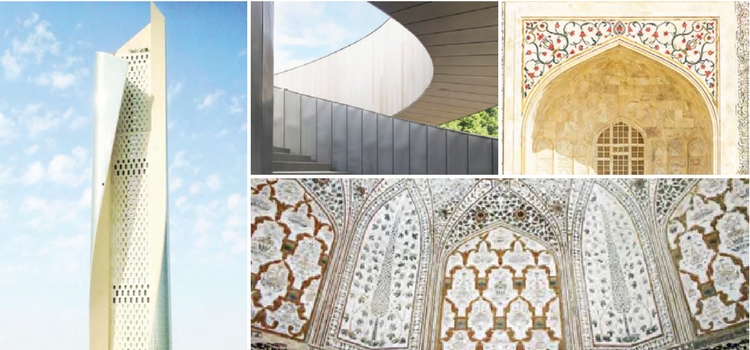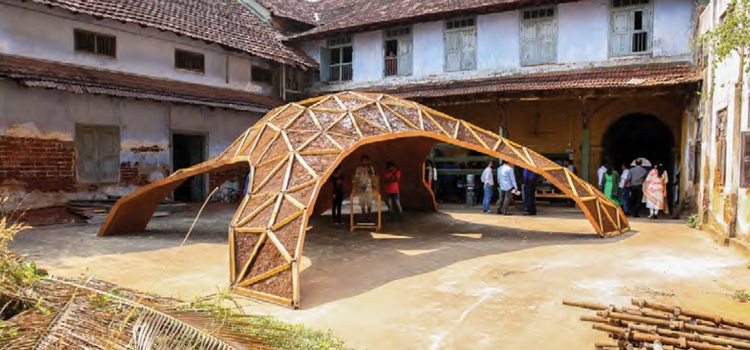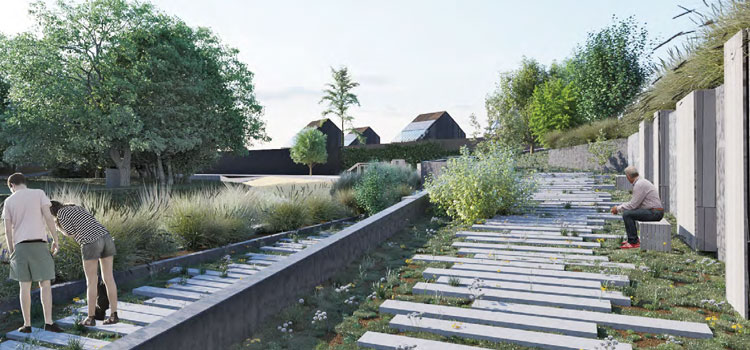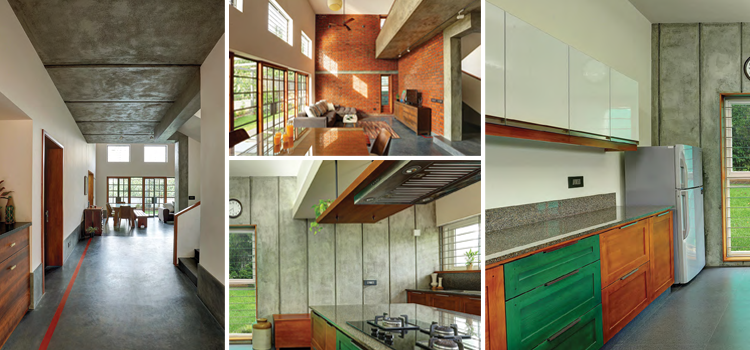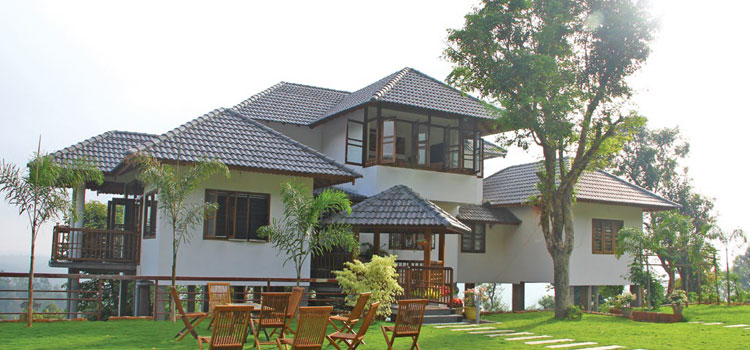Architecture
Office space designs? We only know a couple!
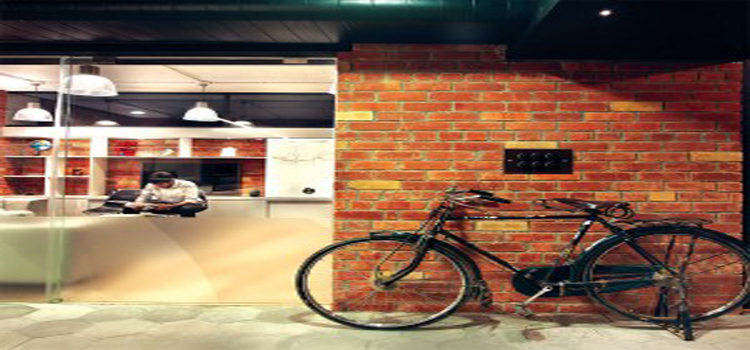
Text: Aatira L Zacharias & Bhyrav Gowda Images: Gareth Hoover
As soon as 1LEAPINGFROG was born, the clichés ended. We soon realised, as in life and love, the practice of architecture as a couple is riddled by complexities of the mind, heart and the ego. In all these endeavours, we must take great risks if we are to fall and remain in love with each other and our work. At times the risk can seem too great, almost insurmountable, but the joy of overcoming them only fortifies our bond.
On our very first project, our own home, we were caught in the strange situations that deign decisions and site throw at you. Only this time we dealt with them collectively. Theoretically that should be easier… not at all. It was anything but that. As our collective ideas, experience or the lack of, and insecurities collided, it became abundantly clear that the dynamics of a personal relationship and a professional one are very different. By the time we finished our home, we had more heated debates, negotiations, decisions, internal turmoil and doubts than life had thrown at us in our few years of togetherness –and we absolutely loved it. The outcome was a home that was truly us, a space that encompassed our desires and demons, our joys and despair. The young frog had grown through leaps and bounds. We were so much more aware of each other, so much more sensitive. As the line between the personal and professional blurred we learnt to respect each others’ creative territory.
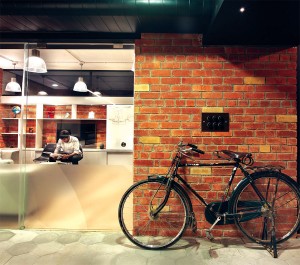 ‘Space’ remains a magical notion for us. We try to treat it without bias, giving each idea a chance to evolve into something larger than who we are. We bring to each project our collective consciousness – poetry, music, food, movies, art, travel, love, loss, memories, friendships and life itself. These have been our inspirations, especially in those moments of turmoil that haunt any designer, young and old alike.
‘Space’ remains a magical notion for us. We try to treat it without bias, giving each idea a chance to evolve into something larger than who we are. We bring to each project our collective consciousness – poetry, music, food, movies, art, travel, love, loss, memories, friendships and life itself. These have been our inspirations, especially in those moments of turmoil that haunt any designer, young and old alike.
We would like to be known as people who come up with good ideas and then oversee execution to perfection, be it for a building or a city, a living room or the backyard, or just about anything. That is after all, the underlying thread that connects us all – the seduction of a good idea!We only hope we don’t stop making mistakes, taking risks and living with doubt. In the few projects that we have finished we have tried to be brave, bold, young and most of all, honest. Of course, the burden of practice is upon us all, but we have tried to shed this weight.

Our latest project reiterates these intentions and beliefs. Our Client, CV India, was aspiring to establish a software development centre, in Bangalore. They presented us with a complex brief that had both functional and open-ended requirements to house over 30 employees involved in ideation and software development. We re-interpreted this with the intention of creating an open work culture that reinforced creativity while responding to a highly technical environment. Visualised with honest materials and exposed services, the space is intended to create an atmospheric setting that would enhance the experience of those within it, as well as their work.
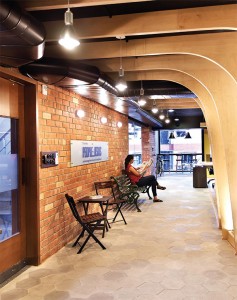 The office is set around the idea of the city in miniature . It was our deliberate attempt to create a sense of arrival while entering the space. Once across the threshold, one left Bangalore behind, entering a microcosm where various built forms such as the ‘office’, the ‘cafe’, the ‘library’ and the ‘bar’, were interspersed within an urban landscape all connected by a notional ‘street’. At the centre of it all, is the grand object, a digital portal, through which the office connects with their international team across the rest of the globe. It acts as an urban marker, visually connecting all the components around through its sculptural energy.The design process was firmly grounded as well as intuitive. We had to balance the functional aspects of the brief with the intangible. Though we enjoyed the support of an extremely liberal patron, we had to work with a conscious restraint since we didn’t want to go overboard, thereby making our ideas too literal. A deliberate attempt was made to work with varying levels of abstractness and ambiguity. With a lot of our brain-storming happening on site, the design process itself was very organic and we had to improvise as the space kept evolving in front of our eyes.Working with very passionate carpenters and contractors, the space finally achieved its atmosphere through their level of commitment and dedication. Our discourse with the client was also integral in negotiating both the brief and the site. As a rule we allow as many inputs as possible to enrich the design experience. After all, you never know where the next big idea may come from.
The office is set around the idea of the city in miniature . It was our deliberate attempt to create a sense of arrival while entering the space. Once across the threshold, one left Bangalore behind, entering a microcosm where various built forms such as the ‘office’, the ‘cafe’, the ‘library’ and the ‘bar’, were interspersed within an urban landscape all connected by a notional ‘street’. At the centre of it all, is the grand object, a digital portal, through which the office connects with their international team across the rest of the globe. It acts as an urban marker, visually connecting all the components around through its sculptural energy.The design process was firmly grounded as well as intuitive. We had to balance the functional aspects of the brief with the intangible. Though we enjoyed the support of an extremely liberal patron, we had to work with a conscious restraint since we didn’t want to go overboard, thereby making our ideas too literal. A deliberate attempt was made to work with varying levels of abstractness and ambiguity. With a lot of our brain-storming happening on site, the design process itself was very organic and we had to improvise as the space kept evolving in front of our eyes.Working with very passionate carpenters and contractors, the space finally achieved its atmosphere through their level of commitment and dedication. Our discourse with the client was also integral in negotiating both the brief and the site. As a rule we allow as many inputs as possible to enrich the design experience. After all, you never know where the next big idea may come from.
Architecture
Creating a Cozy Living Room: Tips for Comfort and Style

Your living room is more than just a space for entertaining; it’s a sanctuary where you unwind, relax, and spend quality time with loved ones. Creating a cozy living room involves a blend of comfort and style that makes the space inviting and functional. Here are some tips to help you achieve that perfect balance:
Choose the Right Furniture
Start with furniture that combines comfort and functionality. Opt for a plush sofa with deep cushions, perfect for lounging. Consider adding a cozy armchair or a recliner for additional seating. Make sure the furniture arrangement promotes conversation and allows for easy movement throughout the room.
Layer Your Lighting

Lighting plays a crucial role in setting the mood. Use a mix of lighting sources to create a warm ambiance. Combine overhead lights with floor lamps, table lamps, and wall sconces. For added coziness, incorporate dimmers or smart bulbs that let you adjust the brightness to suit different times of day and activities.
Add Textures with Throws and Pillows
Textures are key to a cozy living room. Layer different fabrics, such as soft throw blankets, plush pillows, and textured rugs. Choose fabrics like wool, velvet, and cotton that add warmth and comfort. Mix and match patterns and colors to create visual interest and a personalized touch.
Incorporate Warm Colors
Color influences the feel of a room. Opt for warm, neutral tones like beige, taupe, or soft gray for a calming effect. Accents in rich colors like deep blues, earthy greens, or warm terracotta can add depth and coziness. Use these colors in your furniture, accessories, and wall decor.
Use Rugs to Define Spaces

Rugs can help define different areas within a living room and add a layer of warmth underfoot. Choose a rug that complements your furniture and adds softness to the space. A large area rug can anchor the room, while smaller rugs can be used to highlight specific areas, like a reading nook or conversation zone.
Incorporate Natural Elements
Bring the outdoors in by incorporating natural elements. Plants not only add a touch of greenery but also improve air quality and create a calming atmosphere. Choose low-maintenance plants like succulents or snake plants if you’re not an avid gardener. Wooden furniture or decor pieces can also add a natural, grounded feel to the room.
Personalize with Artwork and Décor

Add personality to your living room with artwork and decorative items that reflect your style. Choose pieces that resonate with you, whether it’s family photos, abstract art, or vintage finds. Arrange decor items in groups to create visual interest and avoid clutter.
Create a Focal Point
A focal point helps draw the eye and creates a sense of balance in the room. This could be a fireplace, a statement piece of art, or a stylish coffee table. Arrange your furniture and decor around this focal point to enhance the room’s overall cohesion and appeal.
Invest in Quality Window Treatments
Window treatments can impact both the look and feel of your living room. Opt for curtains or blinds that provide privacy while allowing natural light to filter through. Choose fabrics that complement your decor and add texture, such as linen or velvet.
Add Personal Touches
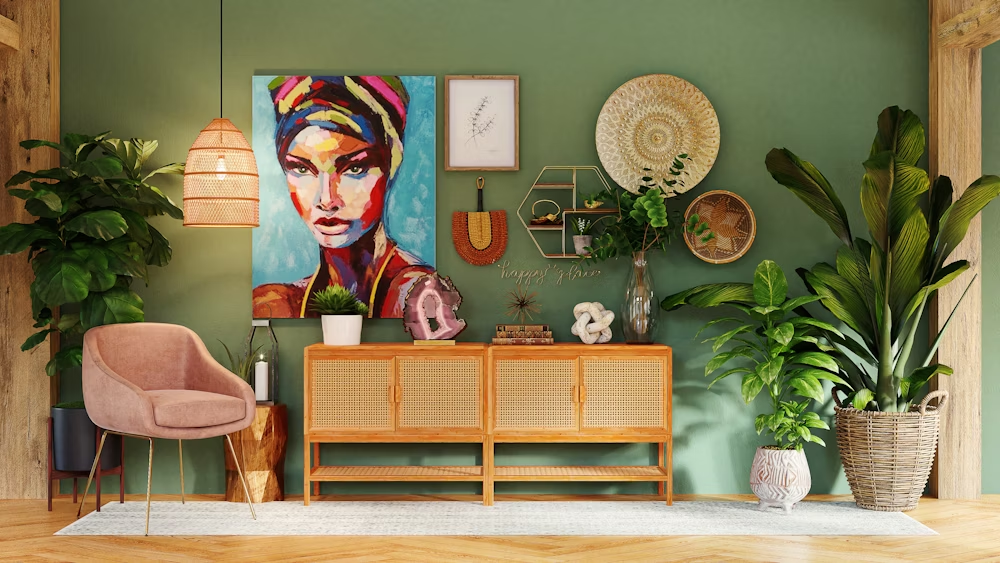
Finally, make the space truly yours by adding personal touches. Incorporate items that have sentimental value or reflect your interests and hobbies. Whether it’s a collection of travel souvenirs, a beloved quilt, or unique decorative objects, these elements will make your living room feel more inviting and personal.
By thoughtfully combining these elements, you can create a cozy living room that serves as a comfortable retreat and a stylish gathering place for friends and family. Enjoy the process of making your space uniquely yours and revel in the comfort and warmth it provides.
Architecture
The Art of Feng Shui: Creating Harmony in Your Home

Feng Shui, an ancient Chinese art and science, is all about creating harmony and balance in our living spaces. By arranging our homes in accordance with Feng Shui principles, we can invite positive energy, known as “chi,” into our lives and promote health, wealth, and happiness. In this blog post, we’ll explore the fundamentals of Feng Shui and share practical tips for applying its principles to create a harmonious and inviting home environment.
Understanding the Basics of Feng Shui:
Feng Shui is based on the concept of “chi,” or life force energy, which flows through our environments and influences our well-being. The goal of Feng Shui is to create a harmonious flow of chi by arranging our surroundings in a way that promotes balance and harmony. This includes paying attention to the layout, orientation, and organization of our homes to optimize the flow of energy.
The Five Elements of Feng Shui:
In Feng Shui, there are five elements—wood, fire, earth, metal, and water—that represent different qualities and energies. By incorporating these elements into our home decor, we can create a sense of balance and harmony. For example, wood represents growth and vitality, while water symbolizes flow and abundance. By incorporating a balance of these elements into our living spaces, we can enhance the flow of positive energy and create a sense of equilibrium.
Applying Feng Shui Principles to Your Home:
Clearing Clutter: Clutter can block the flow of chi and create stagnant energy in our homes. Start by decluttering your space and getting rid of items that no longer serve a purpose. This will create space for fresh energy to flow and rejuvenate your home.
Balancing Yin and Yang: In Feng Shui, yin and yang represent the balance of feminine and masculine energies. Create a harmonious balance of yin and yang in your home by incorporating soft, nurturing elements (yin) with strong, active elements (yang).
Enhancing the Flow of Chi: Pay attention to the layout and arrangement of furniture in your home to optimize the flow of chi. Avoid placing furniture in direct line with doorways or blocking pathways, as this can disrupt the flow of energy. Instead, create open and inviting spaces that allow chi to circulate freely.
Incorporating Nature: Bring the outdoors in by incorporating elements of nature into your home decor. Plants, natural materials, and natural light can enhance the flow of chi and create a sense of vitality and well-being in your living spaces.
Room-By-Room Feng Shui Tips:
Living Room: Arrange furniture in a circular or semi-circular layout to encourage conversation and social interaction. Use soft, natural fabrics and incorporate elements of wood and fire to create warmth and intimacy.
Bedroom: Position your bed diagonally across from the door to command a clear view of the room while you sleep. Keep the space under your bed clear and clutter-free to promote restful sleep and relaxation.
Kitchen: Keep your kitchen clean, organized, and clutter-free to promote health and abundance. Incorporate elements of fire and earth, such as candles and earthy tones, to create a warm and inviting atmosphere for cooking and dining.
By incorporating the principles of Feng Shui into your home decor, you can create a harmonious and balanced living environment that supports your health, happiness, and overall well-being. Whether you’re decluttering your space, balancing yin and yang energies, or enhancing the flow of chi, the art of Feng Shui offers timeless wisdom and practical guidance for creating a sanctuary of peace and tranquility in your home.
Architecture
5 Sustainable Interior Design Trends to Embrace in 2024

As the world becomes increasingly aware of the importance of sustainability, it’s no surprise that eco-friendly practices are making their way into the realm of interior design. In 2024, we can expect to see a surge in sustainable interior design trends that not only enhance the beauty of our living spaces but also minimise our environmental footprint. From repurposed materials to energy-efficient solutions, here are five sustainable interior design trends to embrace this year.
Upcycled Furniture:

One of the most prominent sustainable interior design trends of 2024 is the use of upcycled furniture. Instead of buying new pieces, consider giving old furniture a new lease on life by refurbishing or repurposing them. From reclaimed wood tables to refurbished chairs, upcycled furniture adds character and charm to your space while reducing waste and conserving resources.
Biophilic Design:

Biophilic design, which emphasizes a connection to nature, continues to gain popularity in 2024. Integrating natural elements such as plants, natural light, and organic materials into your interior design not only enhances aesthetics but also promotes well-being and sustainability. Consider incorporating living walls, indoor gardens, and sustainable wood finishes to bring the outdoors inside and create a healthier living environment.
Energy-Efficient Lighting:

With a growing focus on energy conservation, energy-efficient lighting solutions are becoming a staple in sustainable interior design. LED lights, in particular, consume significantly less energy than traditional incandescent bulbs and last much longer, reducing both energy consumption and maintenance costs. Additionally, consider incorporating natural light sources such as skylights and large windows to maximize daylight and minimize the need for artificial lighting during the day.
Sustainable Textiles:

When it comes to upholstery and soft furnishings, opting for sustainable textiles is key to reducing environmental impact. Look for fabrics made from organic or recycled materials, such as organic cotton, hemp, bamboo, or recycled polyester. These materials not only reduce the use of harmful chemicals and pesticides but also minimize waste and support eco-friendly production practices. Additionally, consider investing in durable, high-quality textiles that stand the test of time, reducing the need for frequent replacements.
Smart Home Technology:

In 2024, smart home technology continues to evolve, offering innovative solutions for sustainable living. From smart thermostats that optimize energy usage to home automation systems that control lighting and appliances, these technologies can help reduce energy consumption and increase efficiency in your home. Additionally, smart home devices such as occupancy sensors and smart meters provide valuable insights into your energy usage, empowering you to make informed decisions about resource management and conservation.
As we strive to create more sustainable living environments, embracing these five interior design trends can help reduce our environmental impact while creating beautiful and functional spaces. Whether you’re upcycling old furniture, incorporating natural elements, or investing in energy-efficient technologies, every sustainable choice contributes to a greener future for generations to come. So let’s embrace these trends and make sustainability a cornerstone of our interior design practices in 2024 and beyond.
-

 Style6 months ago
Style6 months agoBridal Guide : Best Looks of Radhika Merchant Ambani
-

 Events4 months ago
Events4 months agoThe L’Oréal Paris Show at Paris Fashion Week 2024
-

 AD4 months ago
AD4 months agoPopular Curtain Fabrics to Consider for Your Home
-

 news4 months ago
news4 months agoLaapataa Ladies: Kiran Rao’s Social Satire Becomes India’s Official Entry for the 2025 Oscars
-

 Events5 months ago
Events5 months agoBest of Fashion Looks : Diya Krishna Wedding
-

 Art4 months ago
Art4 months agoNavratri 2024: Celebrating the Nine Colours and Their Significance
-

 Luxury4 months ago
Luxury4 months agoCartier’s New High Jewellery Collection is a Love For The Wild
-

 People6 months ago
People6 months agoThe Most Expensive Weddings Around The World


